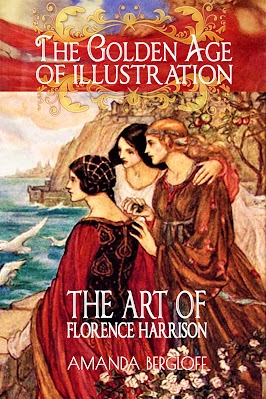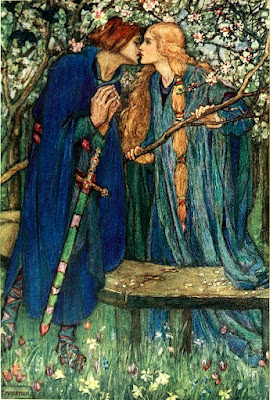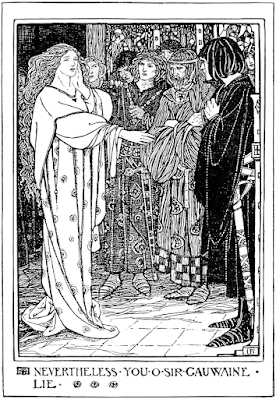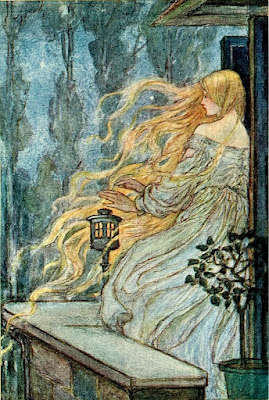The Golden Age of Illustration is a term applied to a time period (1880s - 1920s) of unprecedented excellence in book and magazine illustrations by artists in Europe and America. Advances in technology at the time allowed for accurate and inexpensive reproductions of their art, which allowed quality books to be available to the voracious public demand for new graphic art.
When many people think of the Golden Age of Illustration, Arthur Rackham, Edmund Dulac, and other male artists come to mind, but there were also female artists that excelled during this time.
Florence Harrison was one such artist that produced exceptional work, so learn a bit more about her and her art below...
Florence Susan Harrison (1877 - 1955) was an illustrator of poetry and children's books in the Art Nouveau and Pre-Raphaelite style.
Born in Brisbane, Australia to Captain Norwood and Lucy Harrison, she eventually moved to England and lived there after 1922 until her death in 1955.
In 1905, her first published illustrations appeared in Rhymes and Reasons, from the publishing company of Blackie and Son. With the popularity of the book, Blackie and Son commissioned her art for several other books aimed at the expanding children's market of the time, including, The Rhyme of a Run, and In the Fairy Ring, both of whom were well received by the public and praised for their charming and imaginative illustrations, thus earning Harrison a high place among the illustrators of children's books at the time.
Blackie further commissioned Harrison in 1908 to illustrate a gift book for their Fine Art Series specifically designed for the adult market. Poems by the notable Pre-Raphaelite poet, Christina Rossetti, with Harrison's illustrations, was so successful that it led to contracts from Blackie for two similar volumes. Guinevere and Other Poems (Tennyson, 1912) and The Early Poems of William Morris (1914.)
During this time, Harrison also worked on her own collection of verse titled, Elfin Song, published by Blackie in 1912. Reviewers considered it an exquisite book, surpassing anything she had done up to that time with verse both romantic and magical, appealing to all ages.
After the mid 1920's however, Blackie no longer commissioned new assignments for Harrison, even though they continued to successfully recycle her previous works. In 1922, Oxford University Press commissioned her for their series of children's annuals published under the various Strang titles.
Although Harrison made her name with the brilliant jewel-like colouring of her works in the pre-Raphaelite genre, throughout her professional career she developed a more whimsical style needed to capture the imagination of a younger audience.
Harrison's art has been characterized as having an outstanding sense of composition and color with charming, repeated motifs such as apples, crows, fairies with wing spots that resemble those of a Peacock butterfly, elves, storm lanterns, and roses. Her art always takes me to an imaginative place for my mind to wander in.
Check out some of Harrison's work below to enjoy her enduring legacy of imaginative and beautifully lyrical art.
Resources:
– Florence Harrison Art: Wikimedia Commons
– "Florence Harrison: A Case of Mistaken Identity," by Sandy Hargrove (December 2015)
– Florence Harrison, Wikipedia
– Florence Harrison Illustrations for Elfin Song, from Illustrations Art Gallery Blog
EC's contributing editor, Amanda Bergloff, writes modern fairy tales, folktales, and speculative fiction. Her work has appeared in various anthologies, including Frozen Fairy Tales, After the Happily Ever After, and Uncommon Pet Tales.
Check out her Amazon Author Page
Follow her on
Instagram @amandabergloff and
Twitter @AmandaBergloff
























